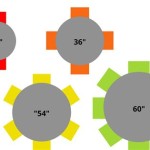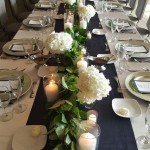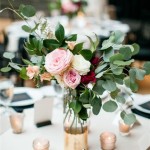How To Make a Table Mat With Wool
Table mats, also known as placemats, serve both functional and aesthetic purposes. They protect table surfaces from heat, scratches, and spills while simultaneously adding a decorative touch to the dining experience. Creating table mats from wool offers a unique blend of durability, texture, and natural beauty. Wool's inherent properties, such as its resistance to heat and its ability to absorb moisture, make it an excellent material for this application. Furthermore, the soft and luxurious feel of wool can elevate the overall ambiance of a dining setting.
This article details a comprehensive guide to crafting table mats using wool, encompassing various techniques and considerations for a successful project. Understanding the different types of wool, selecting appropriate tools, and mastering basic crafting skills are essential components of creating handmade table mats that are both functional and visually appealing. The instructions provided aim to empower individuals, regardless of their prior crafting experience, to produce high-quality wool table mats.
Selecting the Right Wool for Your Table Mat
The selection of wool is a critical factor influencing the final outcome of the table mat. The type of wool chosen will impact the texture, durability, and overall aesthetic appeal of the finished product. Several types of wool are suitable for crafting table mats, each possessing distinct characteristics that cater to different preferences and project requirements.
Merino wool is renowned for its exceptional softness and fine texture. It is a popular choice for projects where a luxurious and delicate feel is desired. However, merino wool may be more prone to pilling and may require more care during cleaning. The fine fibers of merino wool create a smooth and even surface, making it well-suited for intricate designs and patterns. The resulting table mat will have a sophisticated and elegant appearance, ideal for formal dining settings.
Roving wool, also known as unspun wool, offers a rustic and textured appearance. Its loose, airy structure provides excellent insulation and a unique visual interest. Roving wool is often used in felting projects, where the fibers are interlocked through agitation and moisture. Table mats made from roving wool will have a natural and organic look, suitable for casual or farmhouse-style dining areas. However, roving wool can be less durable than spun wool and may require careful handling to prevent shedding or unraveling.
Wool blends combine wool with other fibers, such as acrylic or nylon, to enhance specific properties. These blends can offer increased durability, improved stain resistance, or reduced cost compared to pure wool. A wool-acrylic blend, for example, may be more resistant to fading and shrinkage. Wool blends provide a versatile option for table mats, balancing the benefits of wool with the practical advantages of synthetic fibers. The selection of a specific blend will depend on the desired characteristics of the finished product, such as its level of durability, ease of care, and overall appearance.
The weight or thickness of the wool yarn is another important consideration. Thicker yarns will create a more substantial and textured table mat, while thinner yarns will produce a finer and more delicate fabric. The choice of yarn weight will depend on the desired level of insulation and the intended aesthetic. Thicker yarns may be more suitable for protecting table surfaces from hot dishes, while thinner yarns may be preferred for decorative table mats that are primarily intended to enhance the visual appeal of the dining setting. The gauge of the yarn, which refers to the number of stitches or rows per inch, will also influence the final size and density of the table mat.
Essential Tools and Materials
In addition to selecting the appropriate wool, gathering the necessary tools and materials is crucial for a successful table mat crafting project. The specific tools required will depend on the chosen crafting technique, such as knitting, crocheting, felting, or weaving. However, some essential tools and materials are commonly used across various wool crafting methods.
Knitting needles, available in a range of sizes and materials, are essential for knitting wool table mats. The size of the knitting needles will correspond to the weight of the wool yarn being used. Larger needles are typically used with thicker yarns, while smaller needles are used with thinner yarns. The choice of needle material, such as wood, metal, or plastic, is a matter of personal preference. Wooden needles offer a smooth and warm feel, while metal needles are durable and allow for faster knitting. Plastic needles are lightweight and inexpensive, making them a suitable option for beginners.
Crochet hooks, also available in various sizes and materials, are essential for crocheting wool table mats. The size of the crochet hook will correspond to the weight of the wool yarn being used. The choice of hook material, similar to knitting needles, is a matter of personal preference. Ergonomic crochet hooks, with cushioned handles, can provide added comfort during prolonged crocheting sessions.
A pair of sharp scissors is necessary for cutting wool yarn and trimming any loose ends. A yarn needle, also known as a tapestry needle, is used for weaving in loose ends and securing the finished edges of the table mat. A measuring tape or ruler is essential for ensuring the accurate dimensions of the table mat. Stitch markers can be used to mark specific points in the knitting or crocheting pattern, such as the beginning of a row or the location of a decrease or increase.
For felting projects, a felting needle and a foam pad are required. The felting needle has barbs along its shaft that interlock the wool fibers when repeatedly poked into the wool. The foam pad provides a soft and supportive surface for felting. Other useful tools for felting include cookie cutters, which can be used to create specific shapes, and stencils, which can be used to create intricate designs.
Additional materials that may be required include backing fabric, such as felt or cotton, which can be added to the underside of the table mat for added durability and stability. Fabric glue or sewing thread can be used to attach the backing fabric. Embellishments, such as beads, buttons, or embroidery floss, can be added to the table mat for decorative purposes.
Techniques for Crafting Wool Table Mats
Several techniques can be employed to craft wool table mats, each offering a unique aesthetic and level of complexity. Knitting and crocheting are popular methods that involve creating interlocking loops of yarn to form a fabric surface. Felting involves matting and compressing wool fibers together to create a dense and durable material. Weaving involves interlacing two sets of yarns at right angles to create a woven fabric.
Knitting involves using two needles to create interlocking loops of yarn. Basic knitting stitches include the knit stitch and the purl stitch. By combining these stitches in different patterns, a variety of textures and designs can be created. For example, a garter stitch, which consists of knitting every row, creates a simple and reversible fabric. A stockinette stitch, which consists of knitting one row and purling the next, creates a smooth and flat fabric. Ribbing, which alternates knit and purl stitches, creates a stretchy and elastic fabric. Knitting patterns for table mats can range from simple squares or rectangles to more intricate designs involving cables, lace, or colorwork.
Crocheting involves using a single hook to create interlocking loops of yarn. Basic crochet stitches include the chain stitch, the single crochet stitch, the double crochet stitch, and the treble crochet stitch. By combining these stitches in different patterns, a variety of textures and designs can be created. For example, a single crochet stitch creates a dense and sturdy fabric. A double crochet stitch creates a taller and more open fabric. Crochet patterns for table mats can range from simple circles or squares to more intricate designs involving shells, clusters, or picots.
Felting involves matting and compressing wool fibers together to create a dense and durable material. Wet felting involves using water, soap, and agitation to interlock the wool fibers. Dry felting, also known as needle felting, involves using a barbed needle to repeatedly poke the wool fibers, causing them to interlock. Wet felting is typically used to create larger pieces of fabric, while dry felting is used to create smaller details and embellishments. Felting can be used to create table mats with unique textures and sculptural elements.
Weaving involves interlacing two sets of yarns at right angles to create a woven fabric. The vertical yarns are called the warp, and the horizontal yarns are called the weft. Weaving can be done on a loom, which is a frame that holds the warp yarns in place. Simple weaving can also be done without a loom, using a cardboard frame or a piece of foam board. Weaving can be used to create table mats with intricate patterns and textures. Different weaving techniques, such as plain weave, twill weave, and tapestry weave, can be used to create different effects.
Regardless of the chosen technique, it is essential to follow a clear and concise pattern or set of instructions. Starting with a simple project and gradually progressing to more complex designs can help build confidence and skill. Practicing basic stitches or techniques before embarking on a full table mat project is also recommended. Consistent tension and even spacing are crucial for creating a professional-looking finished product. Taking breaks and stretching hands and wrists can help prevent fatigue and strain. Proper care and maintenance, such as gentle washing or spot cleaning, will help prolong the life of the wool table mat.

How To Make Table Mat Wool Craft Ideas Design

How To Make Easy Woollen Craft Pattern Table Cover Mat Making

How To Make Table Mat From Wool Diy Pom Rug Crafts

Frame Wala Table Mat Keel Knitter Crafter Yogita Knittercrafteryogita Tablemat

New Design Wool Cover Table Mat Tablemat Knittercrafteryogita Framevalatablemat

O Sunshine Placemat Free Crochet Pattern The Turtle Trunk

Crochet Adjacent S Table Mat Free Pattern On Crochetncreate

How To Make A Diy Rag Rug From Bedsheets And Fabric Scraps

Easy Crochet Thalposh Design Crosia थ लप स ट बल कवर Woolen Flower Square Tablecloth

Granny Circle Placemats In Cotton Pure Free Crochet Pattern
Related Posts








